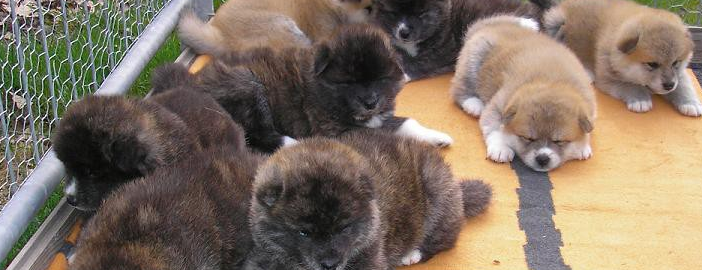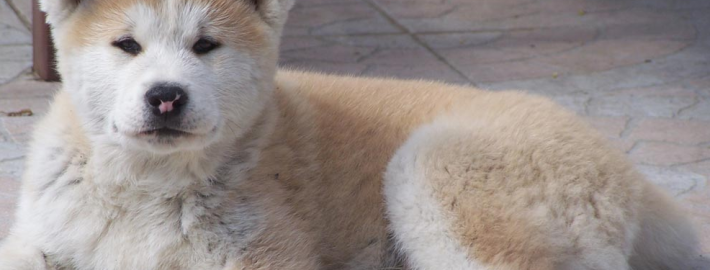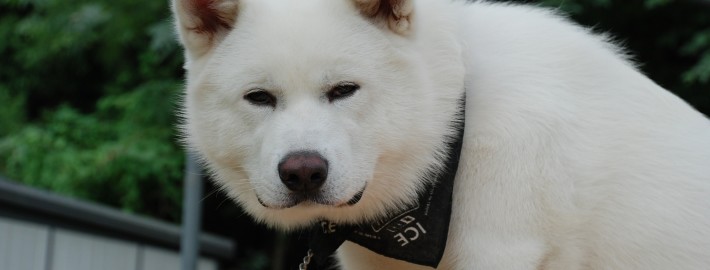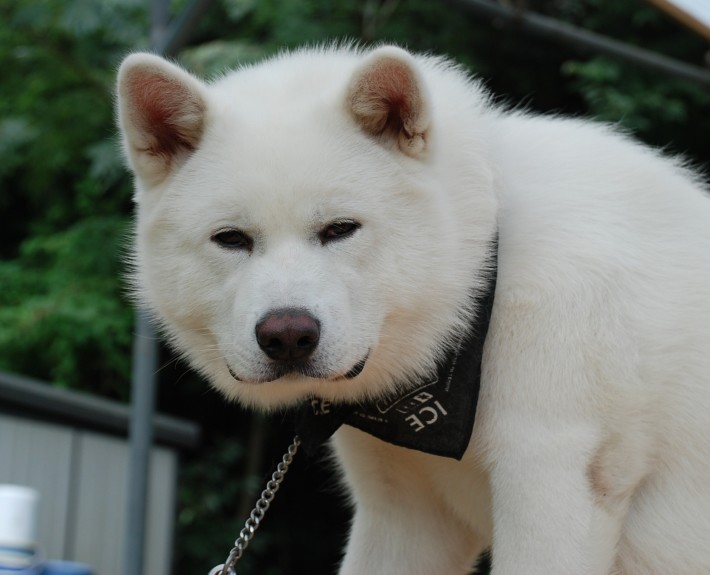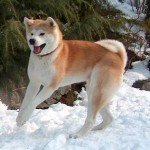What makes the Akita Inu Unique?
A dog breed that originates with the Japanese nobility, the Akita is ideal for active one-dog households and is a popular pet in its country of origin. In fact, the breed is so popular that statues of Akitas are given to new parents and those who are sick as a good luck token.
Characteristic physical traits of the breed include a large, bear-like head with erect, triangular ears set at a slight angle following the arch of the neck.
Breed Groups
Page Contents
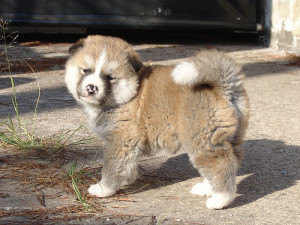
SnapShot
Is the Akita Inu Right For You?
Although known to be a quiet dog (they are known as the “Silent Hunter” in Japan), the Akita has strong guarding instincts and will sound the alarm if an intruder breaks into their house.
Akita temperament can range from calm to bouncy and aggressive, so the breed should always be supervised around small children and other animals. Akitas like to be “pack leader,” so obedience training is also necessary for a harmonious household. The breed will groom itself like a cat, but daily brushing is still necessary, as is daily exercise.
In 5 Words
- Alert
- Docile
- Friendly
- Responsive
- Courgeuos
Characteristics
Learn About the Akita Inu
Description
The Japanese Akitas are only allowed in the colors of red, white, or brindle. Those dogs with loose skin, a black mask, or too much mass are not acceptable in the show ring because these characteristics generally mean crossbreeding has occurred. In the United States, Canada, Britain, and the rest of the non-FCI regulated areas no difference in type is made and all colors are allowed. The Akita comes in short and long coat varieties, but the latter is considered a fault in the show ring. The long coat only occurs when two carriers of the recessive trait have offspring. Akita females give birth to between 3 and 12 puppies in each litter.
The Japanese dogs are typically smaller and more like foxes in build than their American counterparts are. Male Japanese Akitas measure 64–70 cm. (25 ¼–27 ½ in.) at the withers, or the shoulder blades, and weigh between 70–85 pounds (32–39 kg.). Female Japanese Akitas weight between 50–65 pounds (23–29 kg.) and stand 58–64 cm. (22 ¾–25 ¼ in.) at the withers.
Female American Akitas weigh 80–120 pounds (36–54 kg.) and are 24–26 inches (61–66 cm.) at their withers. By contrast the male American Akita weighs around 100–145 pounds (45–66 kg.) and stands 26–28 inches (66–71 cm.) at the withers.
Short History of the Akita
The Akita (秋田犬 Akita-inu) is a large spitz breed of dog originating in mountainous northern regions of Japan. They descended from the Matagi, or bear hunting, dogs. Akitas were historically used in both dog-fighting and hunting capacities. These dogs were the largely the favored pets of nobles and in the past, European dogs were often cross bred with Akitas to improve their fighting abilities. The Akita is still commonly used as a police and guard dog in Japan.
Despite an earlier introduction to the US by the famous Helen Keller, the Akita breed was brought to the United States permanently in the 1950s. Returning World War II soldiers who had been stationed in Japan discovered the Akita breed during their tenure in the country and found them to be agreeable pets. Therefore, they brought them home with to the States. This led to a later official split in the breed, which was recognized and approved by the FCI.
There are now two separate strains the Japanese and American Akitas. The Japanese strain is also known as the “Akita Inu”. The Japanese strain only comes in selected colors, however, The American strain comes in all dog colors; with all other colors of the breed is considered atypical.
Temperament
The Akita Inu dog breed is not only alert but also protective of its family. They are quite affectionate to human members of their own family, as long as the Akita realizes the people are in charge and it is not. These dogs are prone to bite if they are teased and may respond badly to prolonged eye contact. Therefore, this is a breed that should not be left outside unsupervised by adult members of their human family.
Aloof around strangers, the Akita will accept guests in his home provided the owners are also around as well. Akitas are also known to enjoy carrying things around in their mouth and may grab humans in this fashion, but there is no harm intended. They are sensitive to criticism and respond very well to attention from their families.
The Akitas breed is also known for their cat-like habits such as licking themselves and silently stalking their prey, be it cats or chew toys. The Akita does not interact well with other dogs, especially those of the same gender, due to its dominant nature. It also is not a good breed for owners of smaller animals as it was bred to be a hunting dog and regards anything smaller as prey. Akitas are tolerant of cold climates but do not do well with warm ones.
Caring for Your Akita Inu
General Health
According to an Akita Club health survey, the two leading causes of death are cancer and bloat. These medical ailments kill 42% of all Akitas. Lymphosarcoma and osteosarcoma cancers are especially common in these dog breeds. The Purdue University School of Veterinary Medicine reports that the Akita Inu is the second most likely breed to develop bloat, an emergency gastrointestinal syndrome.
In addition to these more serious concerns, the Akita is especially sensitive to certain medications. It is also advisable to keep your Akita from consuming onions, as this can have a negative effect on their red blood cell counts. When not suffering from health problems, Akitas tend to live about 10-15 years on average.
Grooming & Bathing
Akitas do not necessarily require a lot of grooming, despite having a double or triple layer coat. This particular breed sheds on a high to extremely high level. They should be brushed a minimum of once weekly to remove loose hairs, but a daily brushing may prevent households from being inundated with fur. The Akitas do tend to be a cleaner dog breed than most, due in part to their self-grooming habits.
Exercise & Training
This intelligent breed requires a lot of attention and exercise. Early socialization is a key component of raising an Akita. Two hours of daily exercise is recommended by the UK Kennel Club for this breed. Training Akitas may take longer than usual, due to their stubborn streak.
Yet, Akitas are reportedly easy to housetrain. Consistent and firm training is always best for this breed. If they are properly exercised, Akitas are suitable for apartment life. However, these dogs will certainly benefit from having a large yard to play in.

